Relax After HIIT With Foam Rollers
A good massage may be just the ticket after a high intensity workout.
Not only will it relax your muscles and make you feel refreshed, it may prevent the unpleasant after-effects, such as the aches and pains that can last for days.
However, massages do not come cheap, and combined with a gym membership, most of us are reluctant to invest in one, however good it makes us feel.
Foam rolling is an affordable alternative.
It may be new to many of us, but it has actually been around since the 1980’s.
Many gyms are now routinely offering foam rolling to their members after a workout to speed up recovery.
You can also buy foam rollers easily these days, both online and from high street retailers. [1]
What Is Foam Rolling?
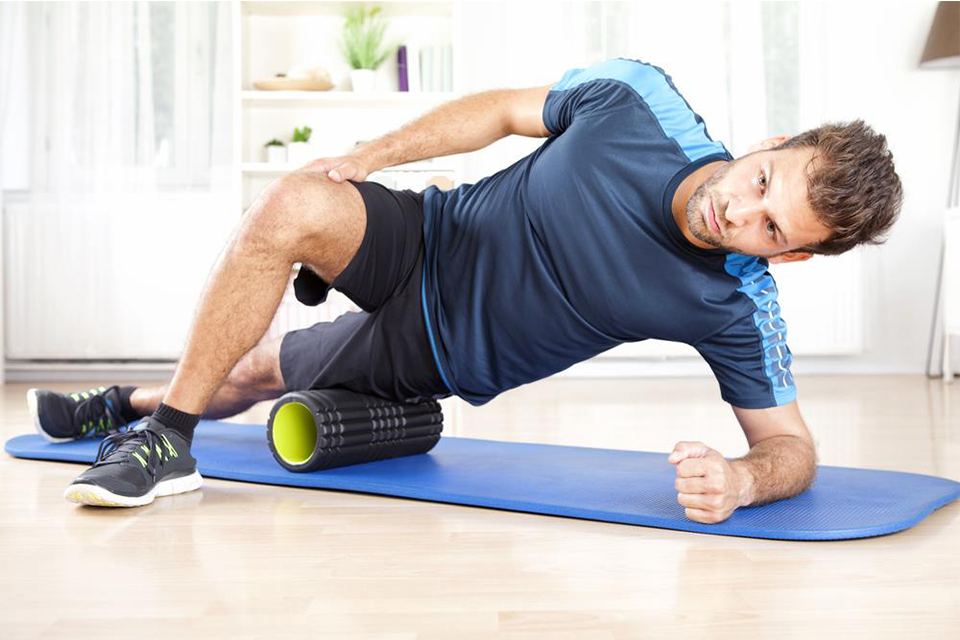
Foam rolling is a self-massage technique that is used to aid and release tightness and tension in muscles and the fascial, the area which surrounds individual and groups of muscles.
It is also known as a Self-Myofascial Release (SMR) massage technique.
It is important to know how to apply pressure correctly in order to benefit from foam rolling.
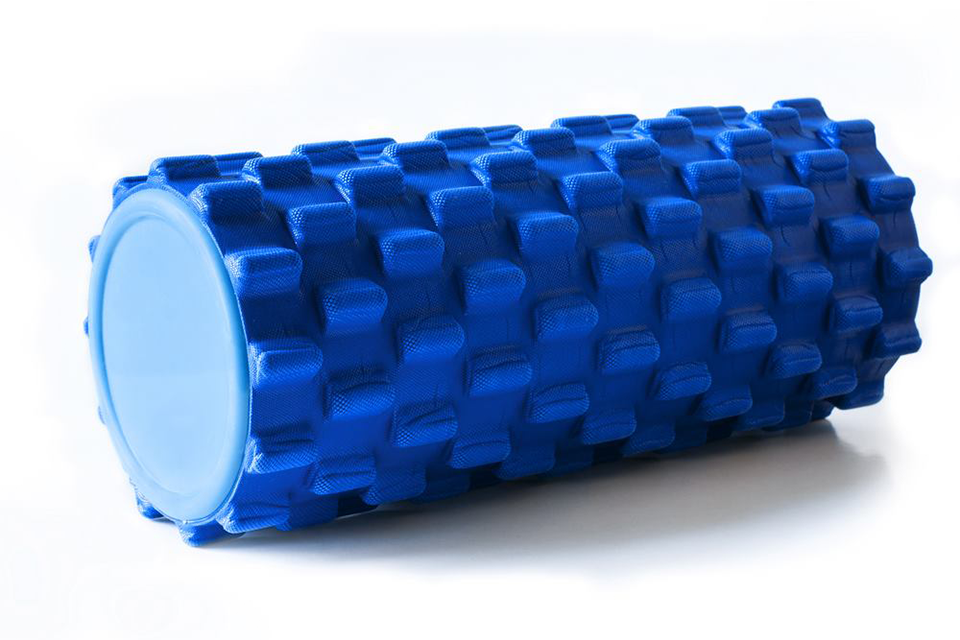
Foam rolling is performed by rolling large foam tubes, called foam rollers, on affected muscle areas, which apply pressure to the muscles.
There are various sizes of foam rollers and the size used depends on the area being massaged. [2]
How To Use Foam Rollers
Foam roller exercises can be done to treat any muscle, although it is recommended you avoid certain more sensitive areas such as the neck and lower back, bones and joints. Problems in these areas should be addressed by a medical professional.
As far as the lower back is concerned, most problems are mechanical in nature, meaning there is a disruption in the way the muscles and bones of the back work together.
A foam roller under the lower back forces the spine into an unnatural, arched position, and this can aggravate the underlying mechanical problems further.
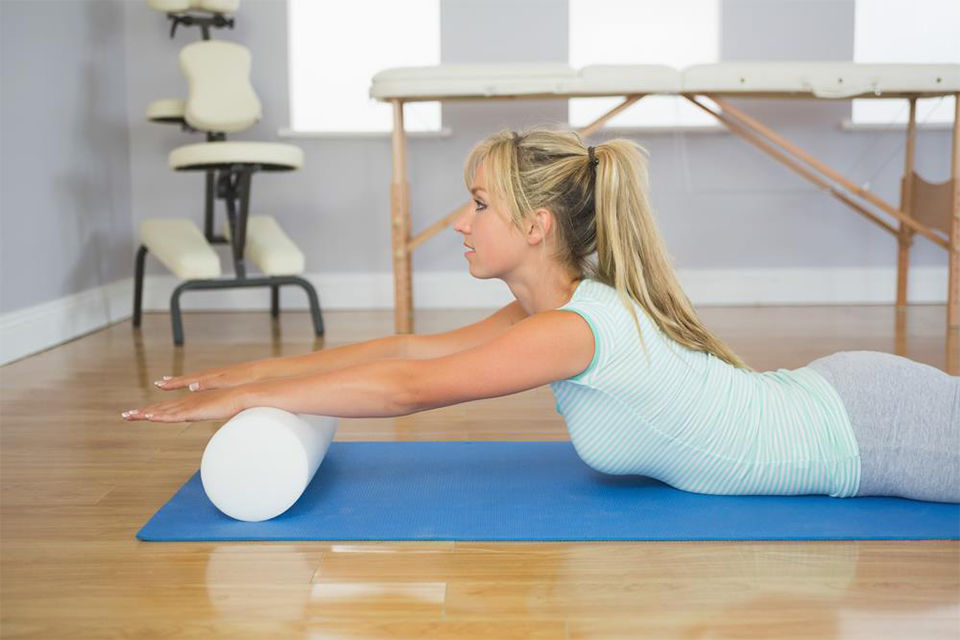
Foam rolling is most effective on the abdominals, arm, leg, glute and shoulder muscles, which are the muscles most used during HIIT.
The roller should be placed underneath the affected area and body weight should be applied to help move the roller along the muscle.
The body part should be moved slowly along the roller, at a rate of approximately 2 cm per second, with as much pressure applied as is comfortable.
Two to three sets of foam rolling lasting between 30 and 60 seconds—that’s per muscle, not total—seems to be effective at reducing pain and improving flexibility.
You can also roll before exercise if you want to boost range of motion or performance. [3]
Foam Rolling For The Back
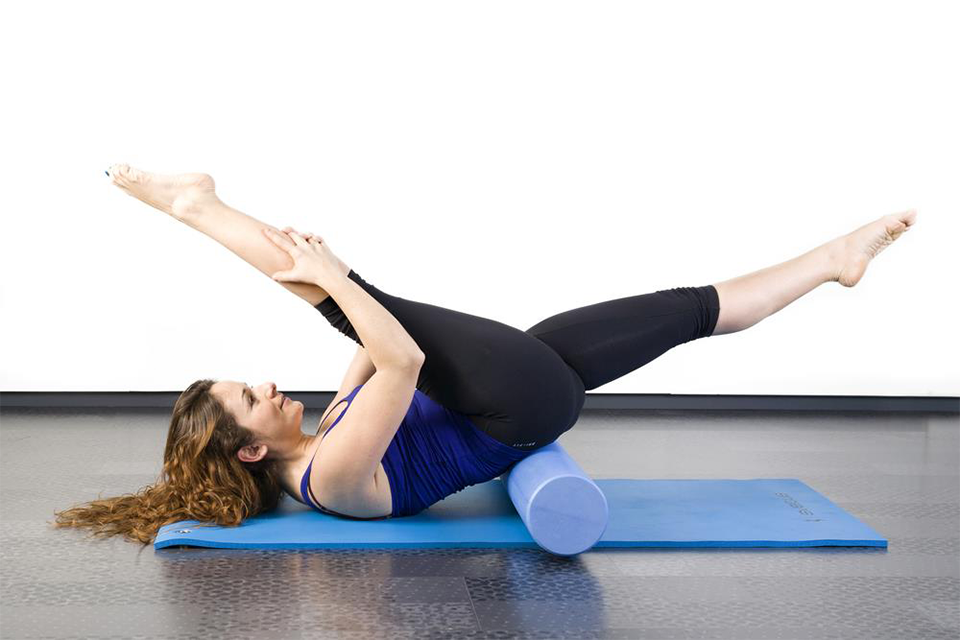
Lie down flat on the floor facing the ceiling, with a foam roller underneath your upper back, your hips raised and your body weight on the roller.
Shift your weight to one side, and, using your legs, push yourself slowly along the roller as far as the waist, and back again. Shift weight to other side and repeat. Avoid lower back area. [4] [5]
Foam Rolling For Runners
Foam rolling can be a valuable part of a healthy runner's warm-up and cool-down routine, as it improves circulation, which gets the body ready for a workout and helps it recover afterward.
And because rolling breaks down muscle knots that limit range of motion, it prepares muscles for stretching. Rolling along the calf and thigh muscles will make all the difference to a runner's performance. [9]
Foam Rolling For Yoga
Foam rolling is also beneficial to yoga fans both before and after a session.
Best Foam Roller- The beLONG Foam Roller
Made of over 50% recycled EVA foam, the Manduka beLONG body roller is an environmentally friendly alternative to the classic foam roller.
It consists of high density foam, giving ultimate support and ensures safe stretching of muscles and tendons.
It is recommended for all kinds of fitness enthusiasts including runners, HIIT and Yoga enthusiasts. [10]
Foam Rolling Benefits
1. Faster Recovery From Workout After-Effects
Intense exercise and repetitive movements, such as High Intensity Interval Training (HIIT), and running, can cause tiny tears in muscle fibres, which leads to an inflammatory response by the immune system as the body starts to repair the damaged fibres. These tears are the main cause of post-workout pain.
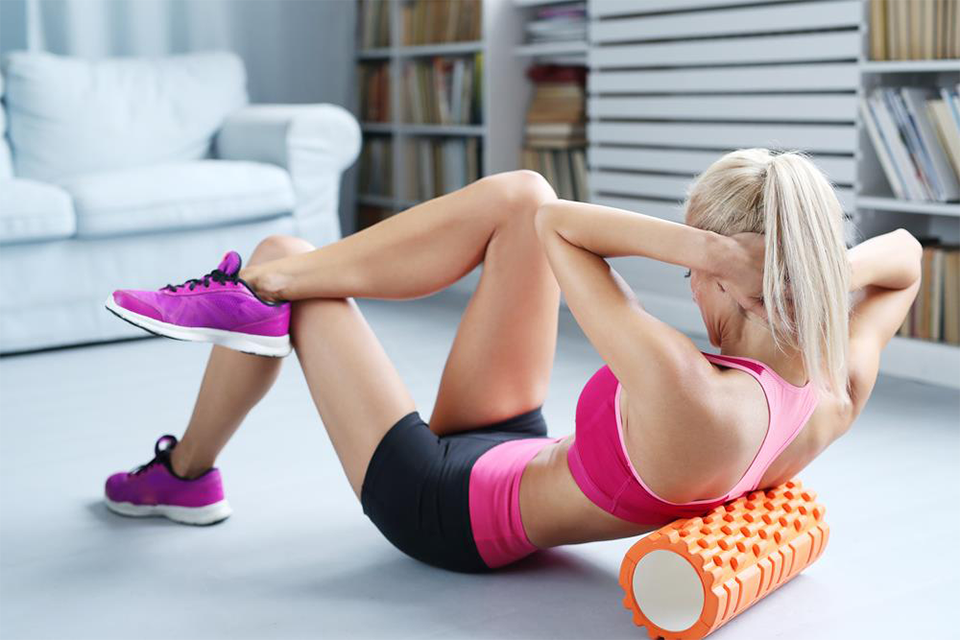
A post-workout massage, such as foam rolling, has been shown to reduce muscle tension by releasing trigger points and stretching out muscles, so improving flexibility.
It also improves the flow of blood and nutrients to the muscles and other tissues caused.
Foam rolling will also break down the toxic lactic acid build-up in the muscles caused by exercise, which is another contributor to fatigue and soreness.
2. Enhances Performance
A faster recovery from the aches and pain associated with exercise will motivate you to exercise more regularly and enhance your performance.
3. Improves Sleep Quality
It has also been shown to improve the quality of your sleep, making you feel more rested and energetic - another contributing factor to enhanced performance during exercise. [3]
4. Increases Knee Joint Movement
A study, led by a team from the Memorial University of Newfoundland, tested the effects of foam rolling on knee joint range of motion and found an overall increase after just 10 minutes of knee rolling. [6]
5. Reduces Cellulite
Another one of the lesser known benefits of foam rolling is that it can help reduce of cellulite. The pressure exerted by the foam roller will helps break down fat fibers under the skin, which is what causes the orange-peel cellulite appearance. [7]
6. Reduces Blood Pressure
Studies have shown that foam rolling can reduce arterial stiffness. Increased arterial stiffness is considered cardiovascular disease, as the heart must work harder by increasing blood pressure.
By decreasing arterial stiffness, foam rolling will increase the blood flow and circulation, while lowering your overall blood pressure.
Foam rolling has also been shown to improve vascular endothelial function, which is important in maintaining vascular health and may prevent cardiovascular disease, especially in aging adults. [8]
Introducing foam rolling into your post workout recovery plan can help to increase your performance for next time and relieve muscle tension throughout your body and is a great way to provide pain relief at home.
Would you like to find out more?
For those who are not members of the clinic, there are two ways you can respond. . .
1. I would like to book in for your Free 20 Minute consultation online to ask further questions on how you can help me . . . or I will phone you on 07 5474 5354
2. I am pro-active about my health. I want to book now and I realise the consultation is normally valued at $300.00, however if I act now I will receive a substantial discount!
Until next time,
Yours in Health
From the Team at Unique Health and Wellness
References:
[1] ncbi.nlm.nih.gov/pmc/articles/PMC3924613
[2] journals.lww.com/acsm-msse/pages/articleviewer.aspx?year=2014&issue=01000&article=00019&type=abstract
[3] time.com/4653956/foam-roller-workout-recovery/
[4] foamroll.net/foam-roller-exercises/how-to-use-foam-roller-for-lower-back-pain/
[5] content.iospress.com/articles/journal-of-back-and-musculoskeletal-rehabilitation/bmr572
[6] journals.lww.com/nsca-jscr/pages/articleviewer.aspx?year=2013&issue=03000&article=00034&type=abstract knee joint
[7] academic.oup.com/asj/article-lookup/doi/10.1016/S1090-820X(98)70037-8 cellulite
[8] clinsci.org/content/120/9/357 arteries
[9] .runnersworld.com/foam-roller/how-to-use-a-foam-roller/slide/
[10] yogamatters.com/manduka-belong-recycled-foam-body-roller.html?gclid=CKiag8qSr9MCFUg8GwodtWkFfw
Disclaimer: The information provided does not take into account individual needs of any particular person. When providing this information it is intended as a sharing of knowledge and information from the research. The information provided should not be construed as personal medical advice or instruction and is not intended to replace a one-on-one relationship with a qualified health care professional and is not intended as medical advice. We encourage you to make your own health care decisions based upon your research and in partnership with a qualified health care professional.
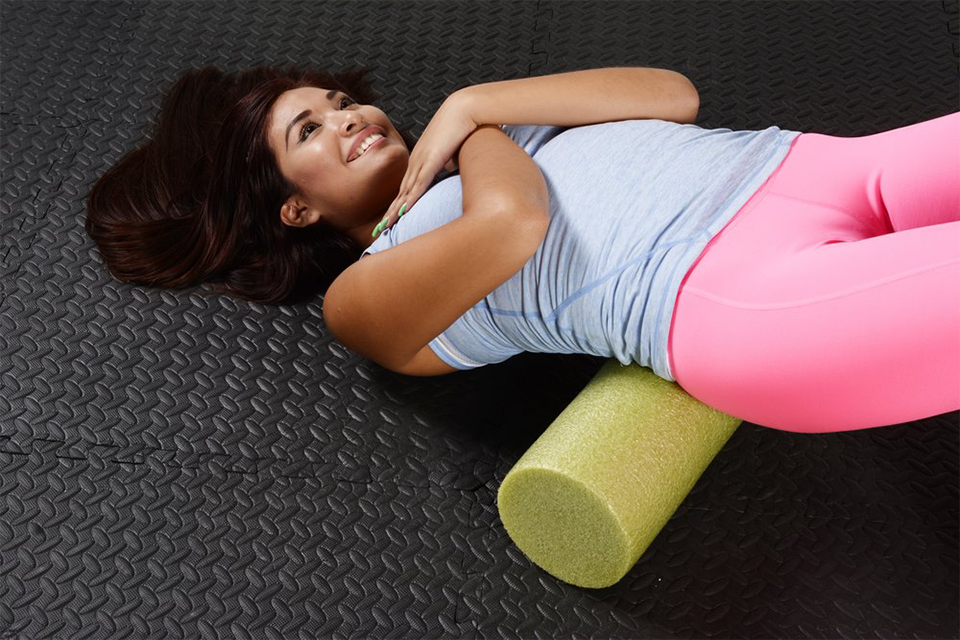
MORE BLOG STORIES
Breaking Down the B Vitamins
Amazing Ways to Help Heal Mitochondrial Dysfunction!
The 5 Worst Foods For Your Gut
‘THE GOLDEN GODDESS’
Mitochondria, Inflammation and Oxidative Stress
Tired? You May Be Suffering From Mitochondrial Dysfunction